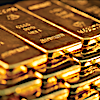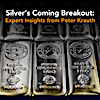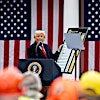Why gold is a hedge against inflation
By: Vincent Tie
Inflation is often understood as being the rise of the prices of goods and services over time. However, this is actually the symptom of inflation i.e price inflation. Inflation is the expansion of the supply of money in an economy. It results in having more currency competing for the relatively same amount of goods and services thus pushing up prices.
Today, currencies can be created in large quantities by banks and governments at a much faster rate than for goods and services are produced and brought to the market. That is why prices rise steadily over time.
To appreciate how quickly currencies can be created, let us review the money supply of the United States from 1918 to August 2008. In 90 years, the money supply reached approximately $831 billion US dollars.
When Lehman Brothers filed for bankruptcy in September 2008, it took the Federal Reserve Bank less than 3 months to double the money supply to approximately $1.6 trillion dollars. This was when the world was introduced to the term ‘quantitative easing’(QE) or more easily understood as creating currency out of thin air. 5 years on, the money supply has surpassed the $3.2 trillion mark – effectively doubling again within 5 short years.
It is no surprise that the US money supply chart resembles a hockey stick today.
This incredible expansion of the money supply has leaked into world economies resulting in price inflation. Hot money from QE has also flowed into other countries creating asset bubbles in the property market. This is why we continue to see rising prices in goods and services. Unfortunately for the most of us, our incomes do not rise in tandem.
Precious metals are often regarded as a hedge against inflation. They preserve purchasing power for long periods of time. When measured against gold, the prices of commodities such as oil are relatively stable over long periods of time when compared with the prices of commodities denominated in a fiat currency like the US dollar.
Another way to look at this would be to imagine taking a time machine back to post World War II period of the mid-1940s. During that time, the Bretton Woods system that the world agreed upon included the fixing of the price of 1 ounce of gold to $35 US dollars.
If you had buried 1 ounce of gold and $35 US dollars in the ground back then and dug both items up today, you can see how well gold has preserved your purchasing power. $35 US dollars unearthed and used today will allow you to purchase $35 US dollars’ worth of goods and services. 1 ounce of gold unearthed would have a value of approximately $1400 US dollars today. What a difference.
Many would conclude that gold became more expensive over the years. Consider the alternate perspective – you now need more units of the fiat currency to buy the same amount of gold. The value of the fiat currency has depreciated significantly over time.
The major economies of the world are still locked in competitive currency devaluations today in their bid to spur growth in their economies. It is not too late to buy gold today to protect your wealth. Precious metals prices have come down significantly since its high of over $1900 in 2011, presenting a great opportunity to accumulate them now.








